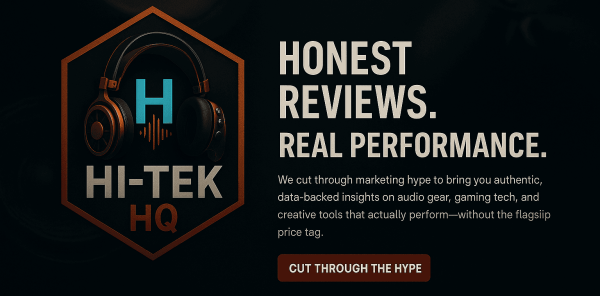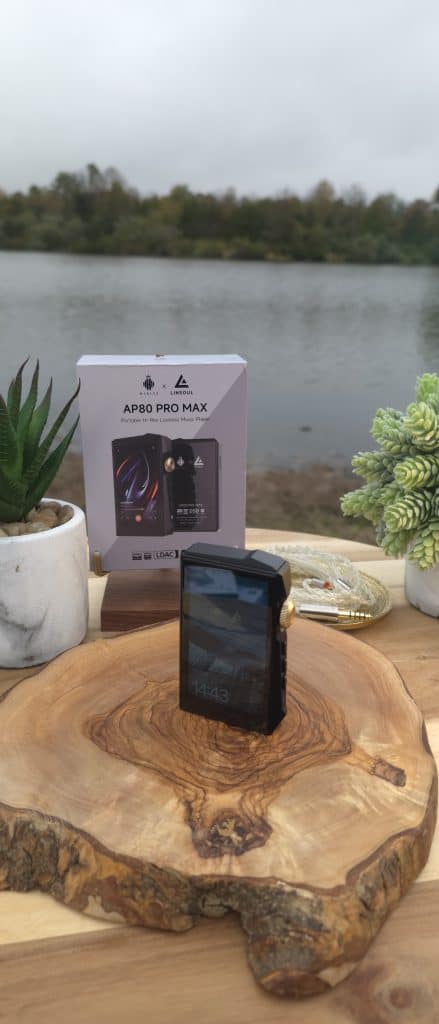
If the iPod Had a Soul: The AP80 Pro Max Story & Review
An Orchestra in Your Pocket
By J. Gonzalez, Hi-Tek HQ Reviews LLC First things first… Disclosure
Full transparency: Hidizs sent me this AP80 Pro Max as part of the official U.S. Review Tour, which I am coordinating. I did not buy this unit. I was given ten days to test it before passing it along to the next reviewer.
They asked me to review it, but not what to say. Everything you are about to read comes from my own testing, time, and experience, with no influence whatsoever.
This review took a lot of patience, late nights, and real listening to put together, so I hope you enjoy it and find it helpful. This is 100 percent Hi-Tek HQ, unfiltered.

I | The Prologue
The iPod turned the world upside down. It revolutionized the MP3 player by making music easy, accessible, portable, and personal.
The AP80 Pro Max from Hidizs does not reinvent the industry the same way the iPod did.
What it does instead is arguably more important. It helps us reconnect with music, to feel it again, to let it mean something again by filtering out outside noise.
And I am not just talking about your noisy neighbors, the kids who never seem to sleep upstairs, or that dog that will not stop barking across the street. The noise I am talking about comes from your phone. The constant pings and chimes from messaging apps, social media, and emails all competing for your attention.
Sometimes you just want to relax and listen to music without getting distracted or having to turn on Do Not Disturb. Sure, it is only one button away, but your phone is still missing something. It is missing soul.
This is the story of how the AP80 Pro Max gives that soul back.


II | The Story
A drummer once stood on a small stage somewhere in China. Just a guy obsessed with sound, not money. His name was Tamson, and when his band fell silent he realized what bothered him most was not the lack of applause. It was how flat music had started to feel in the digital age. The soul was gone.
So in 2009, he founded Hidizs, not in a boardroom but in a rehearsal room. The goal was not to reinvent audio. It was to refine it. To take the feeling of live sound and make it fit in your pocket. Fifteen years later, that mission led to the AP80 Pro Max, the fifth and most ambitious evolution of Hidizs’ compact digital audio players.
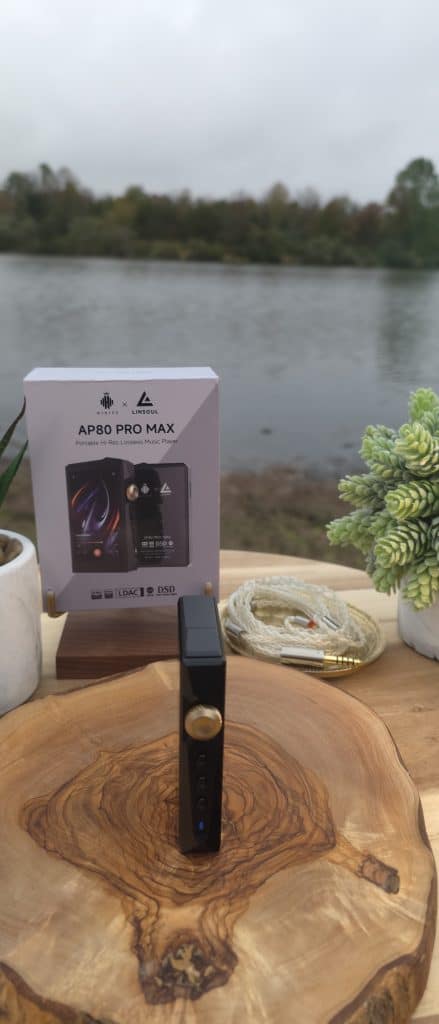
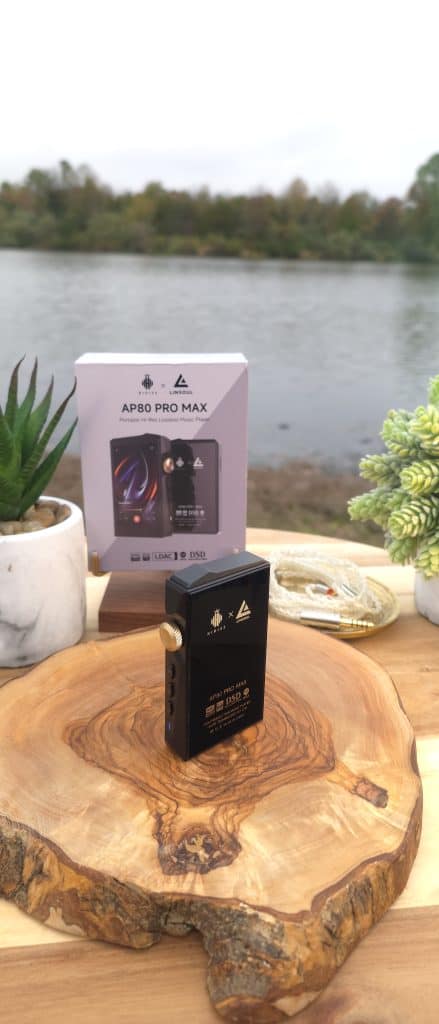
III | What a DAP Really Is
So what even is a DAP (digital audio player), and why should you care?
You have heard the saying, jack of all trades, master of none. Most phones today do almost everything exceptionally well, but one thing they still have not perfected is sound.
You might be wondering why that matters. Think about the last time a song gave you goosebumps. A digital audio player exists to give you more of those moments.
Most people stream music from their phones. It is convenient, no doubt about it. But a DAP is different. It is a single-purpose device built purely for music and sound. No notifications, no distractions, just clean, powerful, and honest playback.
Phones compress and process your music through average DACs (digital-to-analog converters) and noisy circuits. They also use something called a mixer, which resamples and compresses sound in the name of efficiency.
Remember trying to drink a thick milkshake through a straw as a kid. You had to pull so hard just to get a taste of that sweet goodness. That is what phones do to sound. They squeeze the data through a narrow path, and by the time it reaches your ears, part of that original sound is already gone.
I am not saying a DAP is going to reinvent the wheel, and the AP80 Pro Max does not claim to. It will not magically make every song perfect, but it will let you hear music as it was recorded and intended by the artist. Every detail, every nuance, every emotion that was meant to move you.
IV | Design and Build: Precision in the Palm
CNC-milled aluminum. Glass on the front and back. Just 89 grams.
It feels deliberate, not delicate. Purposeful, not flashy.
Edges catch light like cut crystal, and the tolerances are tight.
That bronze volume wheel is both control and ritual. One press wakes it. Two put it to sleep. Hold it down and it disappears.
Each click feels engineered, not guessed.
Ports include 4.4 mm balanced, 3.5 mm single-ended, USB-C for data and charging, and a microSD slot that supports up to 1 TB.
A library of one thousand FLAC (Free Lossless Audio Codec) files indexes in around 25 seconds. Boot-up and shutdown take about two seconds each.
After an hour of balanced playback, it gets warm but never hot. Just pocket-warm.

V | Software and Usability: Where Frustration Meets Potential
HiBy OS (operating system) runs fast, boots clean, and plays beautifully until it does not.
It works, but not always how you expect.
The foundation is solid. It rarely crashes and responds quickly enough.
But once you open Qobuz or Tidal, the cracks start to show.
Connections hang, logins reset, and buffering sneaks in like lag on a bad ping.
It is not deal-breaking, just constant enough to remind you that this is not iOS or Android. Wi-Fi streaming is advertised as a flagship feature, yet it still feels unfinished.
Integration clearly needs a firmware update. The handshake between app and hardware sometimes feels off.
In 2025, no one should need a manual to play music.
We are spoiled by ecosystems where everything just works.
The AP80 Pro Max makes you learn again. It is nostalgic, inspiring, and at times, frustrating.
Most reviewers skip that part. I will not.
This is Kickstarter hardware: brilliant but unfinished.
Early adopters are the beta testers, and that is fine as long as we admit it.
I expected more refinement from Hidizs at this stage. The hardware is exceptional, and the sound proves it.
But to compete in 2025, the software needs the same soul as the chassis.
Cold boot to playback takes about 11 seconds.
Library scanning takes around 25 seconds.
Streaming buffer times vary between 5 seconds and, sometimes, forever.
When it works, it feels magical. When it does not, it reminds you that even genius takes time to grow.
VI | Hardware and Engineering
The AP80 Pro Max uses dual ESS ES9219C DACs, one for each channel. This means it has its own dedicated converter on both the left and right sides, keeping your signal balanced, clean, and distortion-free. It is a design choice that does not just sound great for music. It also gives you precise positional clarity that competitive gamers value.
The overall tone leans neutral-warm. It is clean and detailed, but still sounds alive, not cold or robotic.
Balanced output: about 340 milliwatts at 32 ohms. That is plenty of power for most full-size headphones, including planars like the HIFIMAN Ananda Nano.
Single-ended output: around 112 milliwatts at 32 ohms, which is still more than enough for any IEM (in-ear monitor) or portable headphone.
Output impedance: roughly 0.9 ohms, meaning it plays nice with almost anything you plug in, with no odd frequency shifts or hiss.
It drives planars like the Ananda Nano easily, with plenty of headroom. It is dead silent with sensitive IEMs. It drove them with nearly the same punch and control as my full desktop DAC and amp combo.
In plain English: this little player punches way above its size. It is balanced, powerful, and confident, never straining or coloring the sound.
Battery life sits around nine hours when you are running it balanced at about sixty percent volume, and roughly ten and a half hours if you are using the single-ended output. Solid for something this small.
If you are streaming over LDAC (Sony’s high-quality Bluetooth codec), expect it to sip a little more power, about ten to eleven percent per hour. If you are running it wired with IEMs, it is closer to six or seven percent per hour. Let it sit overnight and you will lose maybe three percent total.
Charging is straightforward. I plugged it into my 45-watt Samsung charger, and it went from dead to full in about two and a half hours. For a dual-DAC player that can drive planars, that is great. The meter was accurate within a couple percent too, so the numbers are legit.

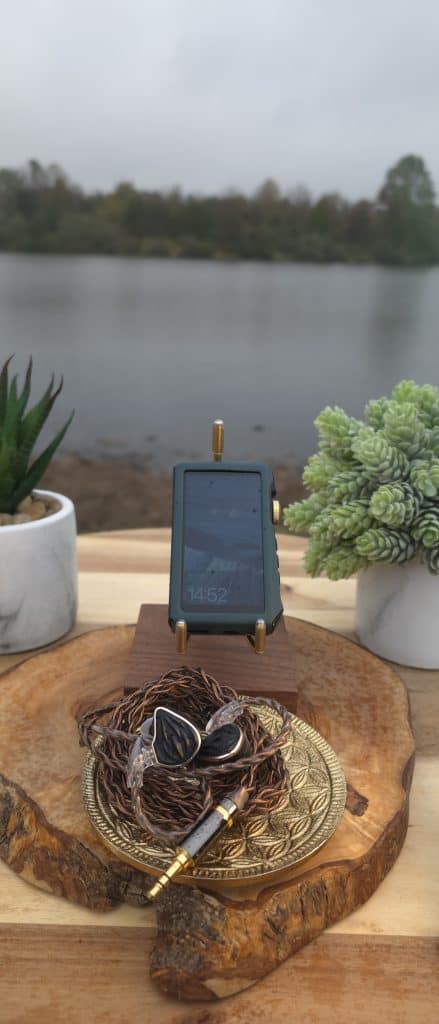
VII | Sound Impressions: Real-World Listening and A/B Testing

For testing I used the AP80 Pro Max both as a standalone player and in direct comparisons with my desktop gear, namely the Fosi K7, the Topping DX3 Pro+, and the HiBy R4. I listened through the Hidizs MP145, AFUL Performer 8, HIFIMAN Ananda Nano, and Audeze LCD-2 Classic. Reference level sat around 74 dB, which is a comfortable loudness for critical listening.
What I wanted was to hear what the AP80 Pro Max actually does to music in real life. Does it change the DNA of your headphones. Does it add sparkle that is not there. Or does it simply let the music be itself. Here is what I found.
Quick reality check about what the player actually does
The headphones and IEMs still do most of the work. The AP80 Pro Max’s role is to feed them a clean, controlled signal. The dual ESS ES9219C DACs give clarity and neutrality with a small touch of warmth. The amp section provides enough power to drive planars without pushing a garbage signal. In short, it cleans the path. It does not fake the performance.
Direct comparisons, plain talk
When I A/B tested against the Fosi K7 and the Topping DX3 Pro+, the desktop units had more effortless headroom and a tiny bit more slam. That was expected. What surprised me was how close the AP80 Pro Max came in clarity and tone given its size. It is not as effortless as the desktop rigs, but it is far from weak.
Compared to the HiBy R4, the AP80 Pro Max sounded cleaner and more focused. The R4 is warmer and a bit more forgiving, while the Hidizs sits in the middle. Clean enough to show detail, but musical enough for long sessions. Practically, that means you get desktop-like clarity in a pocketable package, with only modest sacrifices in raw power.
Track impressions, brief and clear
Keith Don’t Go live – Nils Lofgren
My go-to truth track. The guitar strings shimmer with air. Finger slides are audible. Room reverb feels natural. The player does not color the performance. It lets it breathe.
Sana Corazón – Alex Serra
Flow and texture. Low end is fluid, never overdone. Vocals sit center and intimate. Stereo image is locked tight.
Mourning Grace – Patricia Barber
Emotion first. Her voice has warmth and space without harshness. Double bass glides and does not muddy the piano. Musical and convincing.
Alone Together – Chet Baker
Trumpet tone stays mellow and organic. Reverb tails sound human. I stopped analyzing and just listened.
The Four Seasons, Violin Concerto in E Major Spring II Largo – Nigel Kennedy
Strings are detailed and natural. Violin bites when needed but does not screech. Stage width and quiet passages are handled well.
Prayer – Disturbed
Big, dynamic, heavy. Kick drum and guitars remain distinct. For its size it punches like a desktop rig.
Chop Suey – System of a Down
Chaos handled cleanly. Transitions between clean and distorted sections are smooth. Vocals remain forward when everything goes wild.
DNA – Kendrick Lamar
Sub-bass test. Hits hard while staying controlled. Vocal layers remain clear and separated. No smearing.
Lust – Saint Jhn
Deep rumble with control. Vocals stay present. Synths feel spacious with a polished studio sound.
Better – Khalid
Smooth and intimate. Vocals are lush without being pushed. Nice balance of detail and warmth.
Pray – Sam Smith
Emotional and spacious vocal performance. The player gives Sam room to breathe and lets the emotion come through.
Cello Suite No. 1 in G Major Prelude – Yo-Yo Ma
This is the one where the player disappears. Cello sounds like wood and string. Bow movement and the silence between notes are clearly conveyed.
Piece of Your Heart – Meduza
Dance test passes. Deep bass and crisp highs. Layered drops do not smear. Vocals stay clear.
The Business mixed – Tiësto
Fast, punchy, and lively. Transients are tight. Highs are sharp but not painful. Good EDM stress test.
Mandé Djeliou – Djelimady Tounkara
Midrange warmth and guitar timbre are beautiful. The strings shimmer with depth and natural tone.
Trilobita – Uakti
Texture and resonance. Each tap and chime has dimension. Separation here highlights what dual DACs can do.
Lose Control – Teddy Swims
Huge vocal dynamics with no distortion. The performance feels present, like he is in the room.
Summary impression, straight talk
Every song taught me something different about the player, but the consistent takeaway was clarity with feeling. The AP80 Pro Max does not try to impress you with artificial detail. It removes the fog that phones and cheap sources add. Compared to my desktop gear I lost a little effortless slam and headroom, but for portability the trade-off is small. Compared to the HiBy R4, it is cleaner and slightly more precise while remaining musical.
In practical terms, if you want a pocketable device that makes your headphones sound closer to what they should without adding unwanted brightness, this is a strong pick. If you need absolute desktop power and the last bit of headroom every time, keep your desktop stack. Either way, the AP80 Pro Max earns its place by letting the music do the talking.
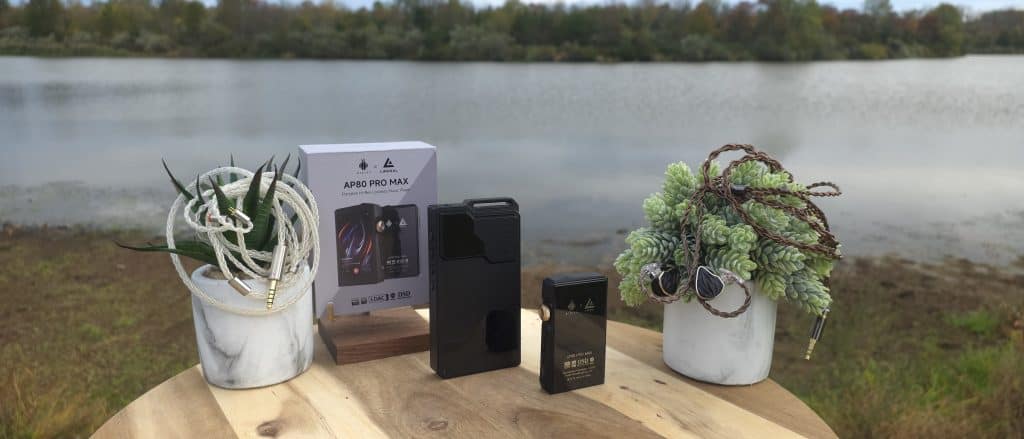
VIII | Gaming Performance: The Surprising Secret Weapon
You can use this little thing for gaming. I plugged the AP80 Pro Max into my PS5 and my PC. It doubles as a legit DAC for both. No drivers. No setup. You plug it in, and your console or PC recognizes it as a USB audio device.
Let us be realistic. This is not going to make you a better player. It will not magically boost your kill to death ratio or make footsteps louder than everyone else’s. What it does is let your headphones or IEMs perform at their best by removing noise, compression, and power limits in most consoles and motherboard sound cards. In other words, it removes the bottleneck.
I tested it with Call of Duty Black Ops 7 Beta and Battlefield 7 on both Steam for PC and PS5. These are new titles running on updated audio engines, which matters. Each one handles distance cues, reflections, and dynamic mixing differently, so your experience depends as much on the game’s code as your gear. Take these impressions with a grain of salt. These are live betas and patches will change the mix.
Latency stayed around forty to forty-five milliseconds, which is low enough for your eyes and ears to stay in sync. Imaging felt tight. I could track movement, reloads, and direction changes clearly. The soundstage felt natural rather than artificially wide, yet it still gave a strong sense of space and distance for gunfire and footsteps. Explosions had weight without distortion. Voices were clean, and the bass had solid control.
Most of what you hear in competitive gaming still comes from your IEMs or headphones. The AP80 Pro Max simply keeps the signal clean and consistent so your gear can perform at its best. Think of it like switching from regular gas to premium. It will not turn your car into a race machine, but it makes the engine run smoother.
There is no mic input, so on PS5 or PC your voice chat still runs through your controller or headset mic. This is strictly for audio output.
In short
• Excellent positional accuracy and clarity
• Controlled dynamics with smooth tone
• Low latency and plug-and-play reliability
• Realistic sound with minimal fatigue
The AP80 Pro Max is an audiophile DAP first and a gaming DAC second, yet it performs impressively in both worlds. It will not make you a better player, but it will help your ears catch small details that most built-in sound cards blur.
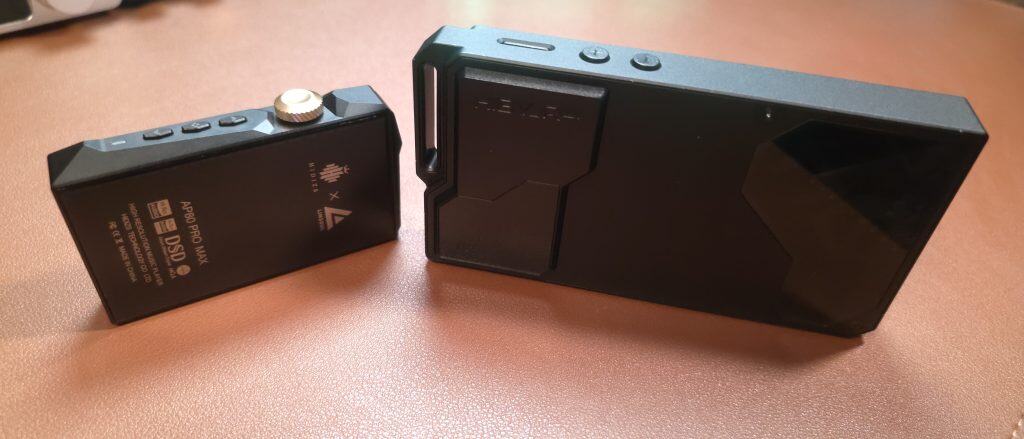
IX | Who It Is For and Who It Is Not
If you still plug your headphones in because you know what clean power sounds like, this one is for you. If you have ever scrolled past a hundred Bluetooth pop-ups just wishing your music would start already, this is for you too.
The AP80 Pro Max fits people who want real, wired sound, music lovers, IEM collectors, and gamers who pay attention to detail. It is also perfect for minimalists who want something that feels premium but does not scream for attention.
If you live inside streaming apps or expect Android-level multitasking, this probably is not for you. Same if you are the type who types essays on a screen keyboard. That tiny UI will test your patience.
It is not for everyone, and that is the point.
X | Brand Context
The AP80 Pro Max was co-released with Linsoul, one of the biggest distributors in the Chi-Fi scene. That matters because it means this unit did not just roll off a production line unchecked. It was vetted, distributed, and supported globally.
It shows that Hidizs did not just want to make another pocket player. They wanted to make one that could hold its own internationally. That partnership adds legitimacy, consistency, and the kind of trust smaller brands rarely get.
XI | Price and Value
At the Kickstarter price of 139 dollars, this feels like a steal. You are getting build quality, tuning, and tactile satisfaction you normally find in gear twice that price. It is one of those rare cases where you almost feel like you cheated the system.
At full retail, around 199 dollars, the game changes a little. That is when you start bumping up against options like the FiiO JM21 or HiBy R4, which sometimes dip below that price on sale. Those players have more features and power, but they are also bigger, heavier, and less pocket-friendly.
That is where the AP80 Pro Max earns its keep. It is not the spec monster. It is the everyday carry that makes you want to use it. It is the one you reach for because it is beautiful, simple, and sounds the way real music should.
If you want every feature under the sun, grab the FiiO or HiBy. If you care more about connection, how music makes you feel, not just how it measures, the Hidizs still holds its ground.
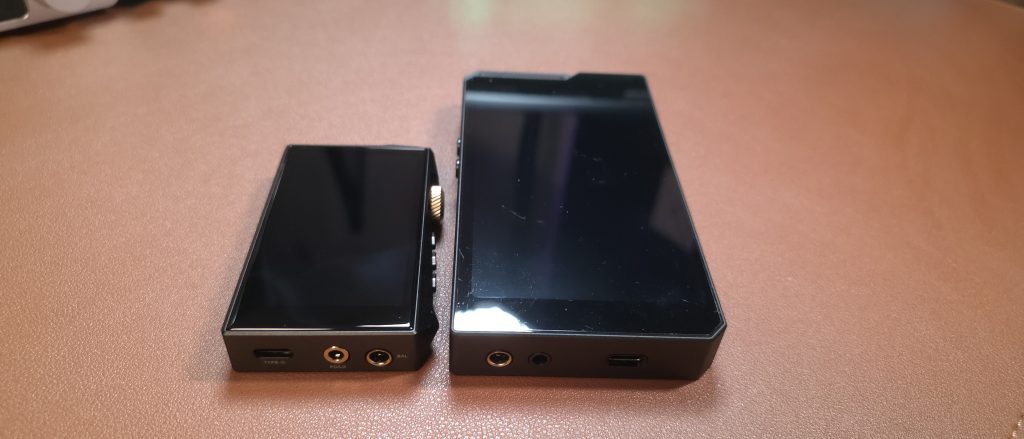
XII | Verdict Triangle and HypeSauce Scale
When I added everything up, this is how it landed
Density: 4.8
Definition: 4.6
Truth: 4.7
Average: 4.7 – Certified Full HypeSauce
At Kickstarter pricing 139 dollars, it is a Certified Full HypeSauce score, an honest 4.7 out of 5. At retail 199 dollars, it is closer to 3.9 out of 5, a Strong Pour, but the software needs tightening to justify the tag.
The HypeSauce Scale exists to separate signal from noise. Too many reviews sound like ads. Around here, we do not drink the Kool-Aid. We measure the sauce, one drop at a time.
XIII | Outro: The Hi-Tek HQ Ethos
The AP80 Pro Max is not a revolution. It is a resurrection.
It brings back something we lost when music became data, that sense of presence. It reminds you that sound is not just ones and zeros. It is heartbeat and breath, space and silence, intention and imperfection.
It will not replace your phone, but it will remind you what silence between songs is supposed to feel like. It does not demand your attention, it earns it.
That is why I said it has a soul. Because it makes you listen again. Not multitask. Not scroll. Just listen.
When the music stops and you sit there smiling, not ready to hit Next, that is when you realize it is not just a player. It is a pause button for the world.

Who We Are – Hi-Tek HQ Reviews LLC
I am not an engineer or a musician. I am just a guy who loves music, gaming, and gear. That obsession became Hi-Tek HQ, a place for people who care about value, performance, and honesty.
We chase the gear that delivers ninety-five percent of flagship performance for a fraction of the cost. Because value matters. Performance matters. But honesty matters most.
The AP80 Pro Max reminded me why I started all this in the first place. Not to chase specs. Not to flex. To feel. To find that one song that hits so hard you forget about everything else for a moment.
That is the real hype.
That is the soul.
